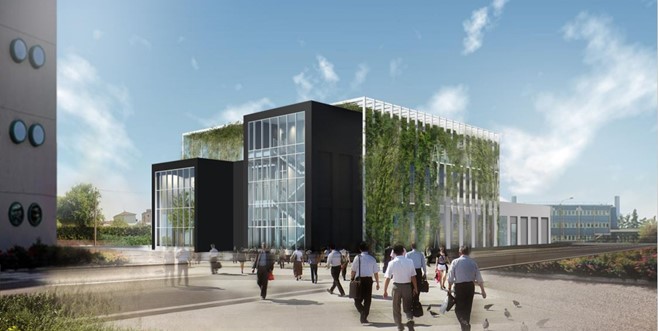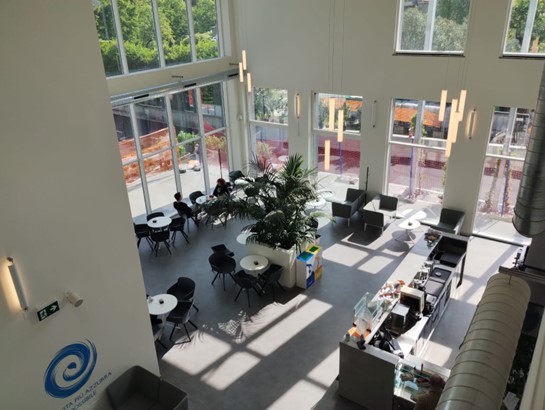AUTHOR: Ing. Nicolò Tomasoni
TUTORS: Ing. Giovanni Franchi
MASTER: Master in “Project and Contract Management in construction works” a.a 2021/22
I progetti possono variare per dimensioni e complessità, ma generalmente mostrano una struttura simile e sono rappresentati da una successione di fasi interconnesse. Il successo, quindi, di un progetto va definito come il raggiungimento di un obbiettivo restando all’interno del perimetro costituito dai vincoli del costo, del tempo e dello scope. Al fine di ottenere ciò risulta necessario affidarsi ad una metodologia di approccio e gestione, quale il Project Management, che investa tutto il ciclo di vita del progetto permettendone di rispettare i vincoli predetti ed al Contract Management che permette una gestione standardizzata dei contratti che costituiscono il progetto. L’obbiettivo di questo studio è di mostrare gli strumenti a disposizione, e la loro applicazione, di un Project and Contract manager attraverso l’analisi di un caso pratico come la realizzazione dell’edificio polifunzionale B-SMART presso la sede di Brescia del Gruppo A2A.
Nel 2017 A2A S.p.A. manifesta la volontà di voler riqualificare l’area destinata a magazzino ed officina presso la propria sede di Brescia. Lo scopo del progetto prevede quindi la demolizione di due edifici esistenti e la costruzione, sull’impronta dei due demoliti, di un nuovo unico edificio adibito a spazio polifunzionale che ospiti al suo interno, uffici per il coworking, sale meeting, locale caffetteria e locale mensa convertibile in auditorium.
La pandemia da Covid-19 unita ad una serie di varianti in corso d’opera, impattanti sia sulle opere impiantistiche che sulle opere strutturali, hanno causato uno stop dei lavori ed un successivo slittamento della fine lavori con annesso aumento dei costi rispetto al budget previsto. L’edificio ha una superficie totale di 2’700 mq divisi su 3 livelli. Il piano interrato con destinazione d’uso locali accessori (vi sono due interrati distinti non comunicanti fra loro: uno ad uso dei locali ausiliari dell’ edificio ed uno destinato alle cucine), al piano terra sono presenti l’ingresso dal quale è possibile accedere ai vari piani tramite scalinata ed ascensore, la caffetteria a doppia altezza, i servizi igienici, le cucine e lo spazio polifunzionale (refettorio/auditorium). Mentre al piano primo sono presenti ambienti destinati al co-working ed alla formazione oltre ad una terrazza.
Nel lavoro di tesi viene mostrato il processo di gestione del progetto attraverso i principi, metodi e strumenti della disciplina del Project Management, andando quindi a redigere lo Scope Statement (un documento in cui si va a scrivere tutto il lavoro e solo il lavoro che deve essere incluso all’interno del progetto), la WBS (cal fine di identificare tutte le attività necessarie pe raggiungere un target specifico e realizzare lo scope di progetto), la OBS (un sistema coerente di deleghe nella gestione di progetto), la RAM (una matrice data dalla WBS ed OBS, per definire gli attori coinvolti in ciascuna Work Packages ed i ruoli all’interno dello stesso), diagramma di Gantt (la rappresentazione delle attività in maniera grafica su un asse orizzontale temporale) ed infine attraverso la Earned Value Management System si è analizzato il progresso del progetto prima della sospensione dei lavori a causa covid. A seguito di ciò, si è studiato e messo in evidenza l’impatto della sospensione dei lavori e l’impatto delle numerose varianti in corso d’opera sul progetto attraverso l’utilizzo degli strumenti predetti e focalizzandosi in particolar modo sulla EVM, a seguito della ripresa dei lavori e della validazione delle varianti, mettendo quindi a confronto i due risultati.
Viene successivamente approfondita la parte contrattualistica dell’intervento analizzandone gli aspetti principali.
Partendo dall’analisi delle procedure di affidamento lavori, necessarie per garantire l’uniformità delle soluzioni operative con le quali si procede alla gestione delle gare di appalto, anche attraverso l’utilizzo di piattaforme telematiche dedicate, per arrivare ad approfondire l’iter di affidamento dei lavori, sia per la parte di progettazione che per la parte di esecuzione delle opere, e delle varie figure coinvolte approfondendone i compiti ed i processi che devono essere seguiti per uniformità aziendale e tracciabilità. Successivamente si è provveduto ad analizzare i SAL, andandoli a definire a livello contrattuale, mettendone in evidenza la gestione e le modifiche subite a causa della sospensione dei lavori per la pandemia e delle varianti in corso d’opera. Sospensione dei lavori e varianti che hanno reso necessaria l’applicazione di procedure e processi ben specifici, da parte dei diversi attori coinvolti nel progetto, dovendo seguire quanto specificato all’interno del contratto sottoscritto da tutte le parti.
FOR INTERNATIONAL STUDENTS:
Projects may vary in size and complexity, but generally display a similar structure and are represented by a succession of interconnected phases. Therefore, the success of a project must be defined as the achievement of an objective while remaining within the perimeter constituted by the constraints of cost, time and scope. In order to achieve this, it is necessary to rely on an approach and management methodology, such as Project Management, which invests the entire life cycle of the project allowing it to respect the aforementioned constraints and Contract Management which allows standardized management of the contracts that make up the project. The objective of this study is to show the tools available, and their application, of a Project and Contract manager through the analysis of a practical case such as the construction of the B-SMART multifunctional building at the Brescia headquarters of the Group A2A.
In 2017 A2A S.p.A. expresses the desire to redevelop the area intended for warehouse and workshop at its headquarters in Brescia. The aim of the project therefore envisages the demolition of two existing buildings and the construction, following the imprint of the two demolished ones, of a single new building used as a multifunctional space which houses, inside, coworking offices, meeting rooms, a cafeteria and canteen convertible into auditorium.
The Covid-19 pandemic combined with a series of variations during construction, impacting both on the plant engineering works and on the structural works, caused a stop of the works and a subsequent postponement of the end of the works with an associated increase in costs compared to the planned budget . The building has a total area of 2’700 m2 divided over 3 levels. The basement with ancillary rooms intended for use (there are two separate basements that do not communicate with each other: one for the use of the building’s auxiliary rooms and one for the kitchens), on the ground floor there is the entrance from which it is possible to access on the various floors via a staircase and lift, the double-height cafeteria, the toilets, the kitchens and the multi-purpose space (refectory/auditorium). While on the first floor there are rooms intended for co-working and training as well as a terrace.
In the thesis work the project management process is shown through the principles, methods and tools of the Project Management discipline, thus going to draft the Scope Statement (a document in which all the work and only the work that must be written be included within the project), the WBS (cal in order to identify all the activities necessary to reach a specific target and achieve the project scope), the OBS (a coherent system of delegations in project management), the RAM ( a matrix given by the WBS and OBS, to define the actors involved in each Work Packages and the roles within it), Gantt diagram (the representation of the activities in a graphical way on a horizontal temporal axis) and finally through the Earned Value Management System the progress of the project was analyzed before the suspension of work due to covid. Following this, the impact of the suspension of the works and the impact of the numerous variations during construction on the project were studied and highlighted through the use of the aforementioned tools and focusing in particular on the EVM, following the resumption of the works and the validation of the variants, thus comparing the two results.
The contractual part of the intervention is then deepened by analyzing the main aspects.
Starting from the analysis of the procedures for awarding works, necessary to guarantee the uniformity of the operational solutions with which the management of tenders is carried out, also through the use of dedicated telematic platforms, to arrive at an in-depth analysis of the award procedure of the works, both for the planning part and for the execution part of the works, and of the various figures involved, deepening the tasks and processes that must be followed for corporate uniformity and traceability. Subsequently, the SALs were analyzed, defining them at a contractual level, highlighting their management and the changes undergone due to the suspension of work due to the pandemic and changes in progress. Suspension of works and variations that made it necessary to apply very specific procedures and processes by the various players involved in the project, having to follow what is specified in the contract signed by all parties.
From the study of the practical case of construction of the B-SMART multifunctional building, the importance of correct management of the project emerged, from the beginning to the end, and of any variations during construction to optimize times and costs even with changes of scope. Furthermore, the need for a standardized management of the contractual part emerged, from the drafting phase of the tender to the conclusion of the works with the delivery of the project, and finally the need for competent professional figures, able to have a structured approach and coherent in the management of a project both for the technical, managerial and contractual aspects.


